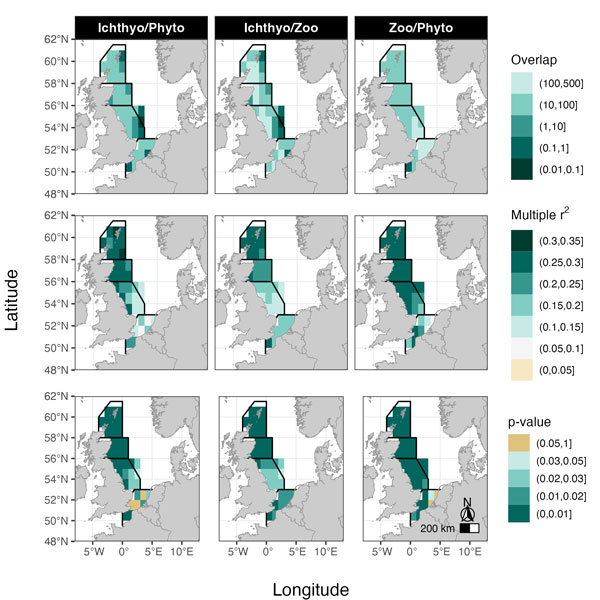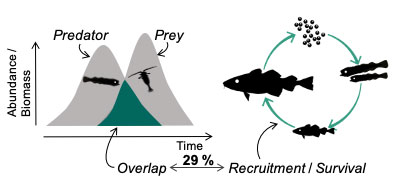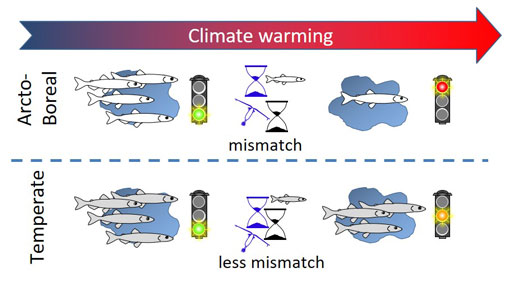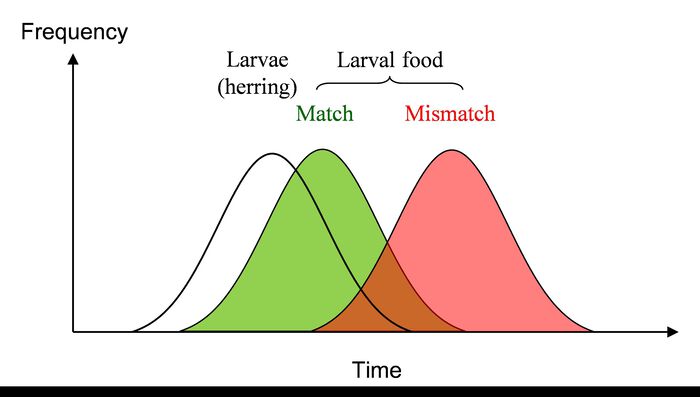Webpages tagged with «Match-mismatch»

The Norwegian coast is a spawning hot spot for several highly valuable fishes. After hatching, the young fish drift, largely together, toward the Barents Sea. During this drifting period, they need to feed and are experiencing predation. In a paper published in Marine Ecology Progress Series (Ferreira et al. 2024) we explore the benefits and disadvantages of drifting together with other larvae.

The Match-Mismatch Hypothesis (MMH) has been a fundamental concept in predator-prey studies for decades. In our recent study (Ferreira et al. 2023), we looked at the impacts of MMH on three trophic levels in the North Sea and found significant implications for sustainable fishery practices.

We assessed the effect of the predator−prey relationship on predator survival by developing a novel metric of predator−prey overlap using spatio-temporal statistical models. We found that the amount of overlap between cod larvae (length: 11−15 mm) and their prey explained 29 % of cod recruitment variability.

Climate warming is changing the timing of among others the reproduction for plankton or fish. Predators depend on an abundant prey supply to feed their young and insure that they survive. When the timing of the prey and the predator are not in synchrony the predator young cannot feed and are dying: there is a mismatch.

Climate change is thought to change many aspects of the marine life. Among others, one can mention changes in species distribution (immigration of species; new species coming to northern areas), the rate of development (warmer the temperature, the faster is the development), and change in the timing of the reproduction. The latter has recently caught a lot of attention around a nearly 50 years old hypothesis of the British fisheries biologist David Cushing.